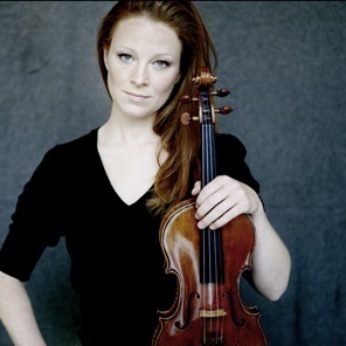Composer: Jörg Widmann (b. 1973)
Performance date: 02/07/2014
Venue: Bantry Library
Composition Year: 1995/2001/2002
Duration: 00:17:05
Recording Engineer: Richard McCullough, RTE
Instrumentation Category:Solo
Artists:
Carolin Widmann -
[violin]

Widmann’s etudes
for solo violin are composed without key or time signature, like fleeting
mutterings against a backdrop of silence. Each one glides thematically into the
next, throwing into question the very boundaries of the composition and our
divisions of time.
The first etude was
composed in 1995 while Widmann studied clarinet at the Julliard School of Music
in
and is dedicated to Peter Sheppard. They worked on it together by fax and
phone, sending signals down wires until the piece was ready. It opens with a
dynamic lattice of harmonic whispers and insinuations, leading into a
siren-like drone passage based on micro-tonal fluctuations, caused by de-tuning
and re-tuning the A and D strings. Bursts of menacing glissando, tremolo and
harsh pizzicato attacks populate the following bars, weaving a tapestry of
suspense. The etude ends with a drone harmonized by the violinist humming a
long frail note. As Jörg has described it in a letter
to Peter; This music is silence with some ‘events’ in it, very intense,
calm, lonely, harsh and brutal at the same time: ‘Standing vertically on the
motion of human hearts’.
The second etude
was composed in 2001 and dedicated to Isabelle Faust. It begins where the first
ends, opening with a plaintive theme punctuated by the violinists voice. The
playing slowly gathers momentum, racing towards increasing complexity and
violence. The disembodied voice occasionally returns, taking the listener by
surprise, adding a touch of humanity to the lattices of fierce and alienating
phrases.
The third etude was
composed in 2002, inspired by Jörg’s sister Carolin Widmann rehearsing Eugène
Ysaÿe’s Solo Violin Sonatas, and is dedicated to her. The seams between the
second and the third are almost inaudible, the muted rustling tremolo of the
second pausing for no more than a breath before gaining momentum at the start
of the third. The opening direction reads Frantic agitation, as fast as
possible and that is exactly what we get. A slowly ascending scurry of
notes increases in clarity, the phrases expanding alongside the distances
between the notes, until the lowest and highest pitches of the violin are tied
together in breathtaking phrases; the extremities of the instrument touched
almost simultaneously. The muted and murky depths of the instrument are forever
present and contrasted with the crystalline and piercing clarity of the highest
notes. The etude dwindles into tentative pizzicato, fading gradually and
introspectively into silence.
Copyright © 2025 West Cork Music. All rights reserved.
Designed and developed by Matrix Internet